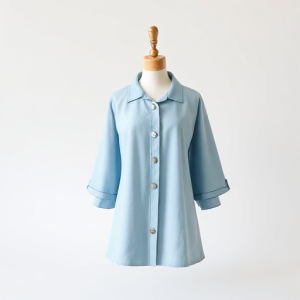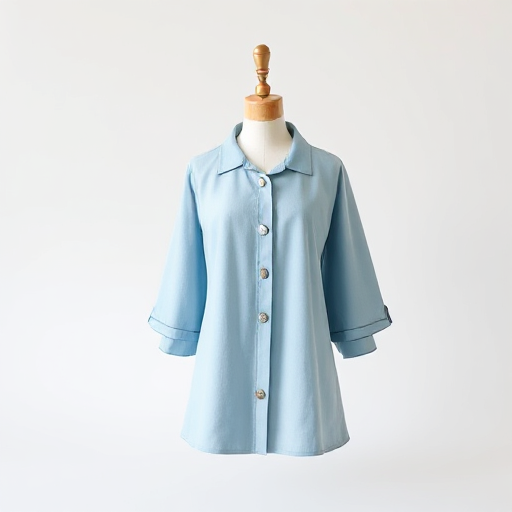 The fashion industry is vast, with multiple segments offering a variety of opportunities for entrepreneurs and businesses. While traditional clothing lines may dominate the mainstream market, the key to success in the fashion industry often lies in identifying and focusing on profitable niches. These niches not only help businesses stand out in a saturated market but also provide a pathway to long-term profitability.
The fashion industry is vast, with multiple segments offering a variety of opportunities for entrepreneurs and businesses. While traditional clothing lines may dominate the mainstream market, the key to success in the fashion industry often lies in identifying and focusing on profitable niches. These niches not only help businesses stand out in a saturated market but also provide a pathway to long-term profitability.
In this article, we will explore some of the most lucrative and trending fashion niches that offer promising opportunities for growth.
1. Sustainable Fashion
Why It’s Profitable:
Sustainability is no longer a trend but a necessity. As consumers become more aware of environmental issues and the impact of fast fashion, the demand for eco-friendly and ethically produced clothing is soaring. The global market for sustainable fashion is expected to grow as eco-conscious shoppers are willing to invest in clothing that aligns with their values.
Key Segments:
- Eco-Friendly Fabrics: Organic cotton, hemp, bamboo, and recycled polyester are gaining popularity.
- Second-Hand Clothing: The market for pre-owned, vintage, or upcycled clothing is booming. Platforms like Depop and Poshmark have turned thrifting into a profitable business.
- Ethical Brands: Consumers are gravitating toward brands that ensure fair wages and safe working conditions for their employees.
How to Capitalize:
- Offer clothing made from sustainable materials.
- Create a resale platform or thrift store that promotes the circular economy.
- Educate your audience on sustainability through content and eco-friendly practices.
2. Plus-Size Fashion
Why It’s Profitable:
Plus-size fashion is an often underserved niche, but it represents a massive, untapped market. In fact, the plus-size market is valued in the billions, with consumers continuously seeking stylish, high-quality options that cater to a range of body types.
Key Segments:
- Plus-Size Apparel: Clothing that embraces body positivity and offers fashionable choices in larger sizes.
- Activewear: Plus-size activewear and athleisure are gaining traction, with people looking for functional yet stylish workout clothes.
- Maternity Plus-Size Fashion: This niche addresses a specific need for fashionable and comfortable maternity clothing in larger sizes.
How to Capitalize:
- Offer inclusive sizing that doesn’t sacrifice style or fit.
- Collaborate with plus-size influencers to amplify brand visibility.
- Focus on comfortable, stylish, and flattering designs that empower body positivity.
3. Athleisure and Activewear
Why It’s Profitable:
Athleisure has quickly moved from being a trend to becoming a staple in everyday wardrobes. As people prioritize health and wellness, there is a growing demand for clothing that is both functional for workouts and stylish enough for casual wear.
Key Segments:
- Yoga Wear: High-quality leggings, sports bras, and tanks tailored for yoga practitioners.
- Running and Sports Apparel: Performance gear designed for athletes, such as compression garments, moisture-wicking fabrics, and durable running shoes.
- Lifestyle Activewear: Trendy athleisure that can transition from the gym to casual outings, like joggers, hoodies, and sneakers.
How to Capitalize:
- Focus on high-performance, comfortable fabrics like moisture-wicking and breathable materials.
- Use social media to target health-conscious individuals and fitness enthusiasts.
- Partner with fitness influencers and gyms to promote your brand.
4. Luxury Fashion (Affordable Luxury)
Why It’s Profitable:
While high-end fashion continues to attract the elite, there’s a growing market for “affordable luxury” – high-quality, designer-inspired fashion that doesn’t break the bank. Consumers are increasingly looking for affordable alternatives to luxury brands, while still enjoying premium products.
Key Segments:
- Designer Dupes: Affordable versions of popular designer bags, shoes, and accessories.
- Premium Basics: High-quality basics that give off a luxury feel, such as cashmere sweaters and leather accessories.
- Luxury Watches and Jewelry: Affordable yet stylish watches and accessories that cater to aspirational consumers.
How to Capitalize:
- Offer high-quality craftsmanship with a focus on timeless design.
- Create a strong brand narrative around exclusivity and elegance, even at a more accessible price point.
- Target the aspirational buyer who wants luxury without the premium price.
5. Streetwear
Why It’s Profitable:
Streetwear has evolved from being a niche subculture to a mainstream fashion phenomenon. It draws inspiration from skateboarding, hip-hop, and urban culture, and appeals to a younger demographic that values individuality, style, and exclusivity.
Key Segments:
- Limited Edition Releases: Drops and exclusive collections that create hype and demand.
- Collaborations: Partnering with other brands or celebrities to release co-branded collections.
- Sneakers: The sneaker market is especially profitable, with limited-edition or high-demand sneakers often reselling for several times their original price.
How to Capitalize:
- Create unique designs and collections that tap into youth culture and street aesthetics.
- Use influencer marketing and collaborations to build brand hype.
- Focus on limited-edition releases and product scarcity to increase demand.
6. Loungewear and Pajamas
Why It’s Profitable:
The rise of remote work and an increased focus on comfort during the pandemic has made loungewear a booming niche. Consumers are willing to invest in comfortable yet stylish pajamas, robes, and sweatpants that they can wear both at home and on the go.
Key Segments:
- Luxury Loungewear: High-end loungewear that feels like pajamas but can be worn out of the house.
- Sustainable Pajamas: Organic cotton or bamboo fabric pajamas that align with sustainable living.
- Sleepwear for All Ages: From toddler pajamas to adult sleepwear, the market for comfortable, stylish sleep clothing is diverse.
How to Capitalize:
- Focus on premium, comfortable fabrics such as silk, cotton, and bamboo.
- Offer a range of sizes and inclusive designs.
- Market products as both stylish and functional, suitable for lounging or even running errands.
7. Tech-Integrated Fashion (Wearable Tech)
Why It’s Profitable:
The intersection of fashion and technology is a growing niche, particularly as consumers become more interested in integrating technology into their everyday lives. From fitness trackers to smart clothing, wearable tech is transforming how we think about fashion.
Key Segments:
- Smart Clothing: Apparel that incorporates technology, like jackets with heating elements or shirts that monitor your heart rate.
- Fitness Trackers and Smart Accessories: Wearables like smartwatches, fitness bands, and health-monitoring jewelry.
- Tech-Inspired Fashion: Clothing with futuristic designs, LED lights, or other tech-inspired elements.
How to Capitalize:
- Partner with tech companies to design clothing that incorporates wearable technology.
- Educate consumers on the functionality and benefits of smart clothing.
- Market to tech-savvy and health-conscious audiences who want both style and function.
The fashion industry offers immense potential for businesses that are willing to dive deep into niche markets. By focusing on specific consumer needs and trends, entrepreneurs can carve out profitable segments that align with their passions and values. Whether it’s creating sustainable clothing, serving the plus-size community, or capitalizing on the growing demand for athleisure, profitable fashion niches are an exciting way to build a business that stands out in the competitive fashion landscape.
By understanding these niches and aligning business strategies accordingly, you can create a brand that resonates with your target audience while generating long-term profitability.
